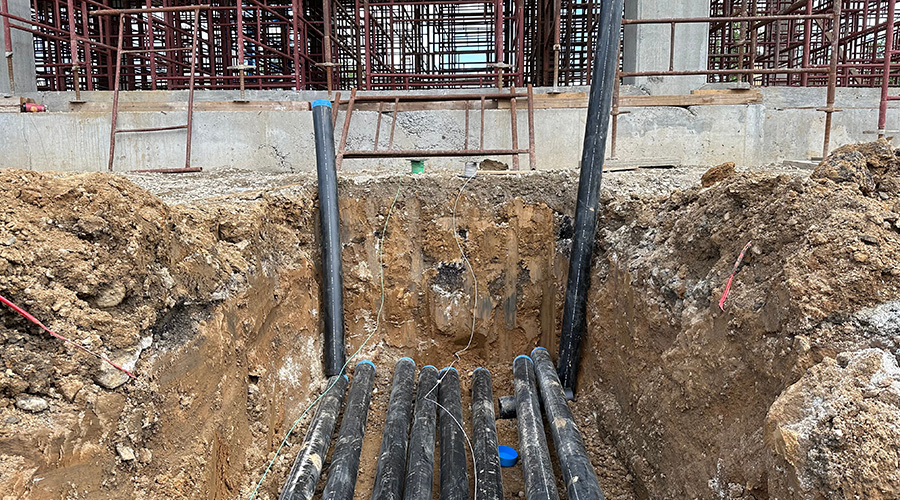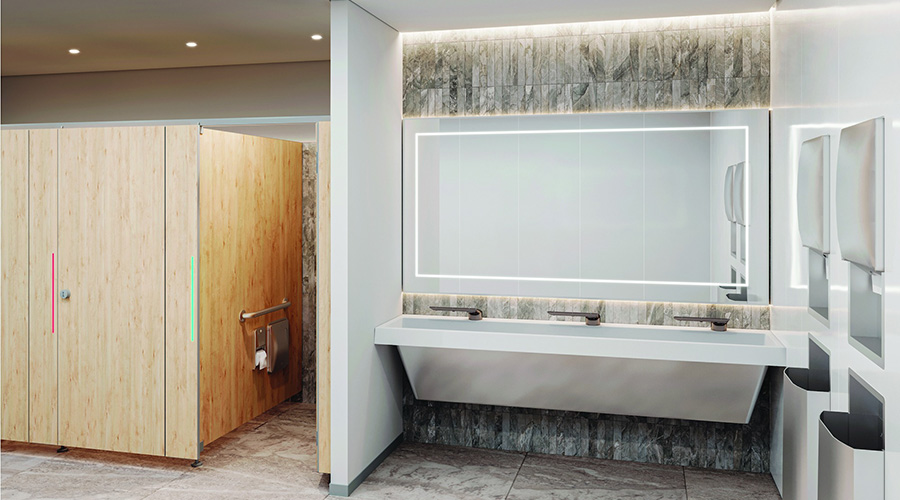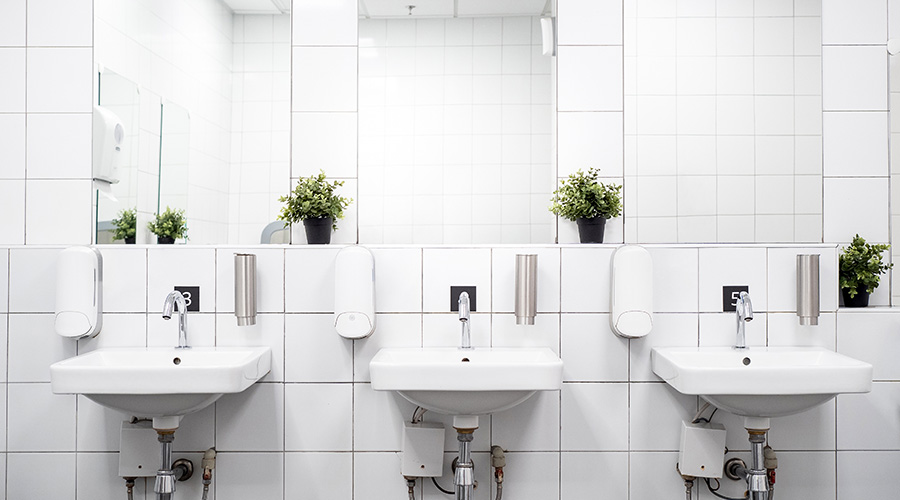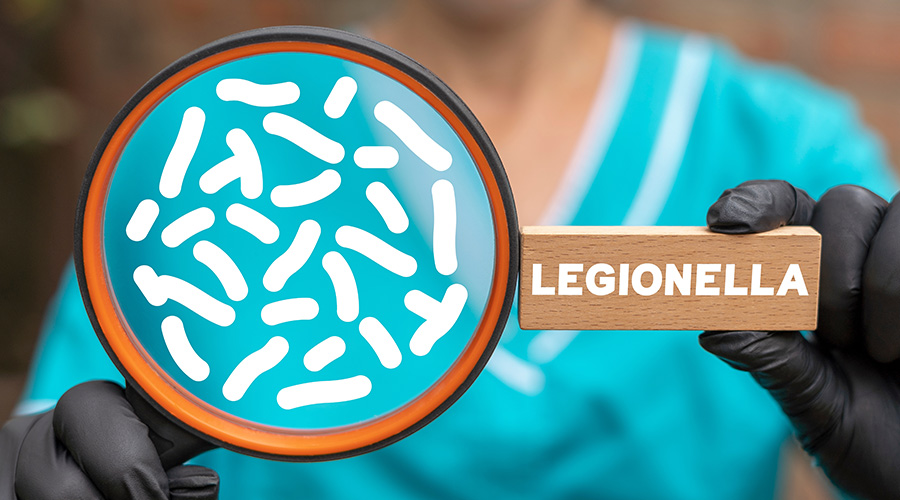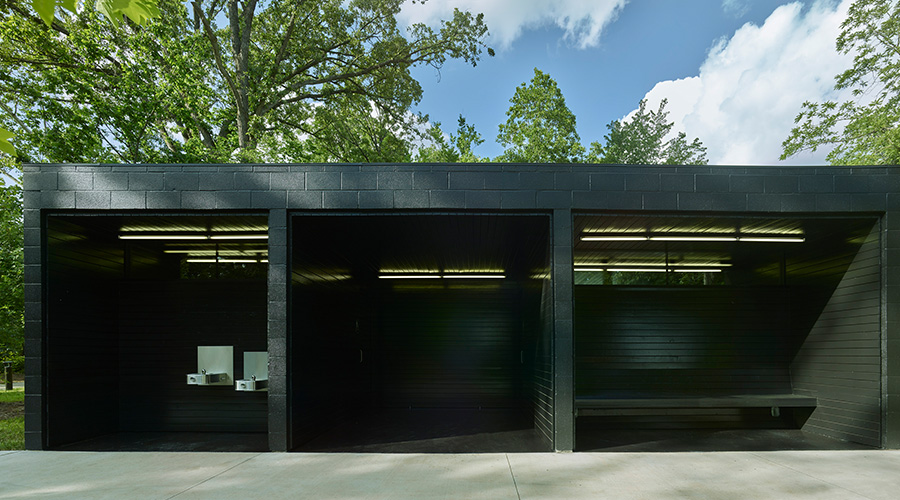The Latest Innovations in Sustainability and Efficiency for Restroom Fixtures
Innovations in restroom fixtures are helping facility managers create cleaner, greener and more efficient spaces.
As sustainability takes center stage in facilities management, restroom fixtures are undergoing a transformation. No longer are they just functional necessities, they now play a crucial role in meeting environmental goals, enhancing hygiene and reducing operational costs.
In this roundtable discussion, industry experts share insights with Facility Maintenance Decisions on the latest sustainable materials and technologies shaping restroom fixtures, common maintenance challenges and how emerging trends are helping facilities meet water efficiency goals.
FMD: What sustainable materials or technologies are emerging in restroom fixture design, and how are they being adopted by facility managers?
“Recycled materials, such as plastics and metals, are gaining wider acceptance in the plumbing industry because they divert waste from landfills and reduce the need for new materials, ultimately helping to protect the environment. Additionally, the evolving demand for higher levels of hygiene in public spaces has led to the greater use of anti-microbial surfaces to protect users from pathogens and contaminated surfaces. Another emerging trend is the use of hydrophobic coatings, designed to repel water from surfaces, which can help reduce the frequency of cleaning while improving the appearance and cleanliness of restroom fixtures.”
— Paul McLennan, P.Eng., manager of advanced engineering, Delta Commercial
“The most exciting technology that we are seeing more widely adopted by facility managers is sustainable hydropower to operate hands-free fixtures in restrooms. The ability to eliminate the cost of changing batteries and the sustainable aspect of keeping batteries out of landfills is a trend that we are excited to see growing in commercial restrooms. The improved efficiency and availability of hydropower systems has increased dramatically over the past three to five years, giving facility managers plenty of options to meet their needs of their commercial restrooms.”
— Dan Danowski, product manager, Zurn Finish Plumbing, and Robert Carter, product manager, Zurn Finish Plumbing
“For washbasins, smooth and nonporous materials with seamless construction like solid surfaces and natural quartz are sustainable, hygienic and very easy to keep clean. Solid surface and quartz are nonporous and seamless, helping to prevent bacteria and mold accumulation and growth. They can be easily cleaned, disinfected, repaired, reused and last the life of the building. Look for cast-formed basins as these materials have no unsightly seams or gaps that attract dirt and grime buildup. Restroom partition models also feature sustainable materials that are easy to clean and maintain.”
— Kris Alderson, senior marketing manager, Bradley Company
FMD: What are the most common maintenance issues you hear about from managers, and how are your products addressing them?
“All plumbing fixtures require routine maintenance such as periodically cleaning filters, diaphragm maintenance or replacing cartridges. Our products are designed for quick installation and allow easy and quick maintenance using universal parts so that downtime and repair part inventories can be minimized.”
— Paul McLennan, P.Eng., manager of advanced engineering, Delta Commercial
“The most common maintenance issues are typically broken down into three buckets. The ability of restroom fixtures to operate as intended while meeting reduced water consumption goals, ability to withstand vandalism / high use and the frequency of having to maintain restrooms with reduced staff.”
— Dan Danowski, product manager, Zurn Finish Plumbing, and Robert Carter, product manager, Zurn Finish Plumbing
“The most common maintenance issues include:
- Unexpected repairs: Equipment and systems can malfunction without warning, like a leaky faucet that leads to costly fixes and downtime.
- High maintenance costs: Reactive maintenance and inefficient processes can cause expenses to spiral out of control.
- Lack of maintenance tracking: Without proper tracking, maintenance schedules can be ignored, leading to asset degradation.
- Energy management: Balancing sustainability goals with cost control can be challenging.
- Supply chain issues: Disruptions can affect the availability of necessary parts and materials.
- Compliance: Ensuring that facilities meet all relevant regulations and standards.”
— Greg Hunt, commercial product manager, Chicago Faucets
FMD: How are your products helping facilities meet water efficiency goals, and what innovations are on the horizon to further reduce water usage?
“Smart fixtures are an emerging technology that can monitor usage and alert staff to abnormal conditions when issues arise. IoT-enabled products can detect leaks or low-flow conditions, allowing facility staff to react before problems become serious.”
— Paul McLennan, P.Eng., manager of advanced engineering, Delta Commercial
“All manual faucets are available with durable ceramic cartridges that can be rebuilt and are ideal for water that may have more debris as the soft seat ensures a complete seal. Future innovations will include more widespread adoption of data driven technologies and further refinements in faucets and shower systems.”
— Greg Hunt, commercial product manager, Chicago Faucets
Jeff Wardon, Jr., is the assistant editor for the facilities market.
Related Topics:






